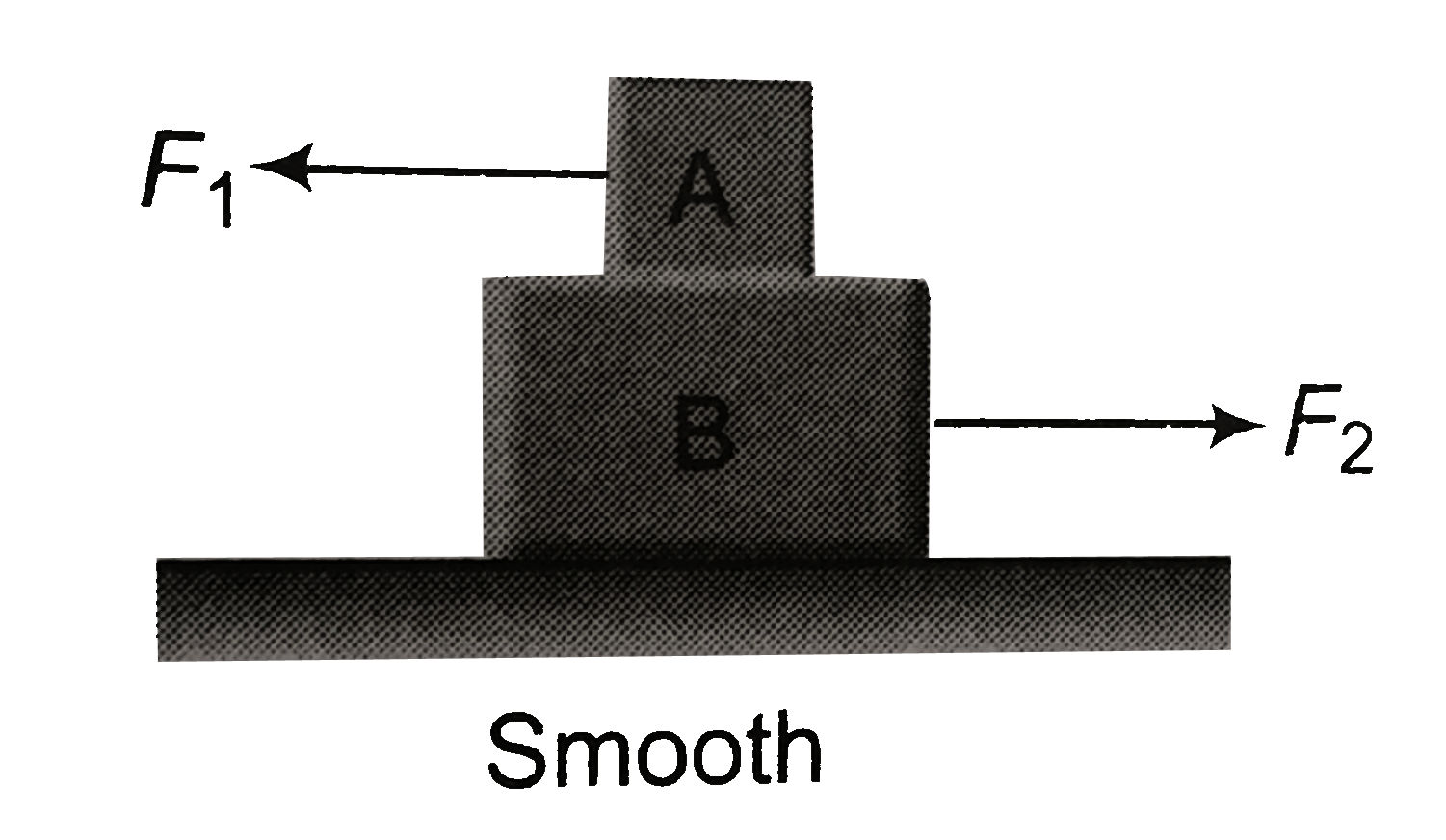Assertion : The force of tension on a body always act away from the body.
Reason: Friction force always opposes the motion of a body.
If both assertion & Reason are True & the Reason is a corrrect explanation of the Asserion.
If both Assertion & Reason are True but Reason is not correct explanation of the Assertion.
If Assertion is Trie but the Reason is False.
If both Assertion & Reason are false
The correct Answer is:C
To solve the given question, we need to analyze both the assertion and the reason provided.
Step 1: Analyze the Assertion
The assertion states: "The force of tension on a body always acts away from the body."
- Explanation: Tension is a force that is transmitted through a string, rope, or cable when it is pulled tight by forces acting from opposite ends. In a Free Body Diagram (FBD), if we have a mass connected to a string, the tension force will always pull away from the mass towards the point of connection. Therefore, the assertion is true.
Step 2: Analyze the Reason
The reason states: "Friction force always opposes the motion of a body."
- Explanation: Friction is a force that resists the relative motion between two surfaces in contact. It acts in the opposite direction to the motion of the object. However, it is important to note that friction opposes relative motion, not just motion. This means that if there is no motion, friction can still act to prevent the initiation of motion. Therefore, the statement is false because it oversimplifies the nature of friction.
Step 3: Conclusion
Since the assertion is true and the reason is false, the correct answer is that the assertion is true, and the reason is false.
Final Answer
- Assertion: True
- Reason: False
- Therefore, the correct option is C.
---
The assertion states: "The force of tension on a body always acts away from the body."
The reason states: "Friction force always opposes the motion of a body."
Since the assertion is true and the reason is false, the correct answer is that the assertion is true, and the reason is false.
- Assertion: True
- Reason: False
- Therefore, the correct option is C.
Topper's Solved these Questions
- NEWTONS LAWS OF MOTIONBook:ALLENChapter:NEWTONS LAWS OF MOTIONExercise:EXERCISE-II
Explore 112 Videos
- NEWTON'S LAWS OF MOTION & FRICTIONBook:ALLENChapter:NEWTON'S LAWS OF MOTION & FRICTIONExercise:EXERCISE (JA)
Explore 4 Videos
- RACEBook:ALLENChapter:RACEExercise:Basic Maths (Wave Motion & Dopplers Effect) (Stationary waves & doppler effect, beats)
Explore 24 Videos
Similar Questions
Knowledge Check
Assertion: Force on a body A by body B is equal and opposite to the force on the body B by A .
Reason: Force in nature always occur between pairs of bodies.AIf both assertion and reason are true and reason is the correct explanation of assertion.BIf both assertion and reason are true and reason is the not correct explanation of assertion.CIf assertion is true but reason is falseDIf both assertion and reason are false.The work done by a body against friction always results in
Aloss of kinetic energyBloss of potential energyCgain of kinetic energyDgain of potential energy
In the figure shown, force of friction on A from B will always be right wards
Friction always opposes the relative motion between two bodies in contact.

View SolutionAssertion :− When a man climbs the rope friction force acts in downward direction.
Reason :− Friction force opposes relative motion ot tendency of relative motion between two contact surfaces.
View SolutionFrictional force between two bodies
View SolutionThe force that resists the motion of a body on a surface
View SolutionAssertion: Centre of mass of a rigid body always lies inside the body.
Reason: Centre of mass and centre of gravity coincide if gravity is uniform.
View SolutionAsseration : In circular motion work done by all the forces acting on the body is zero.
Reason : Centripetal force and veloity are mutually perpendicular.
View Solution